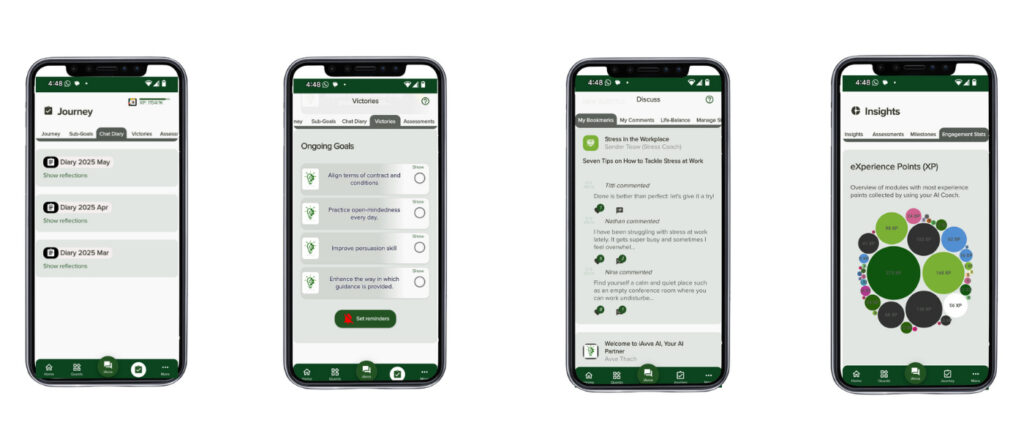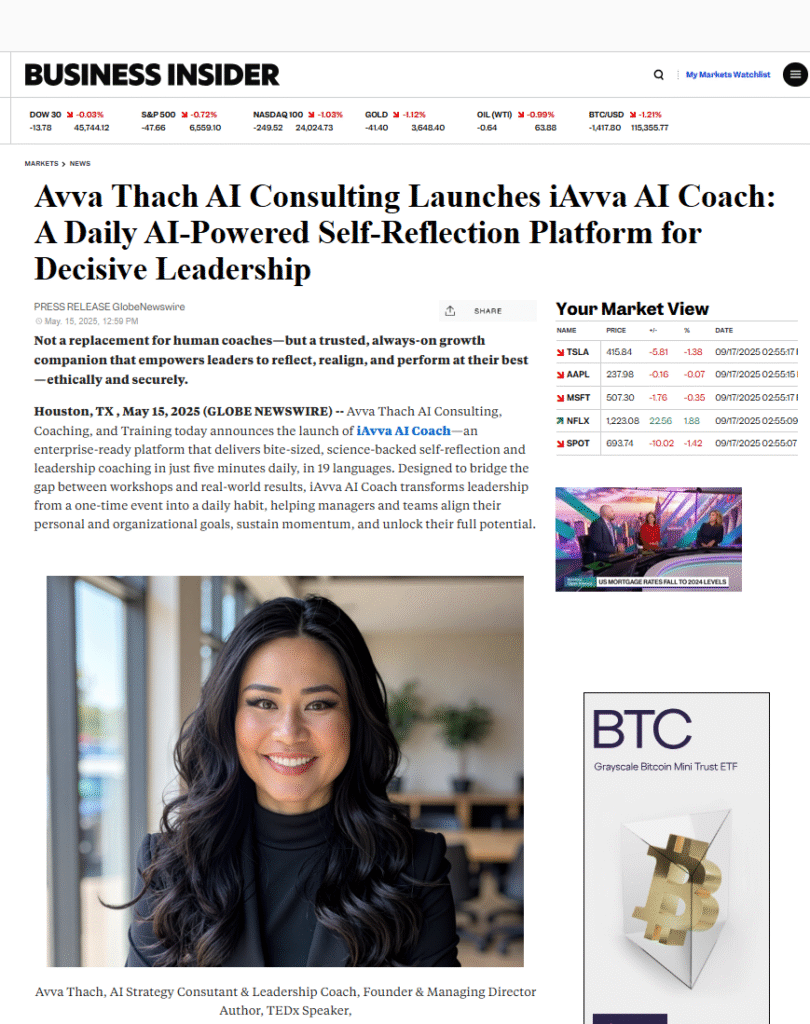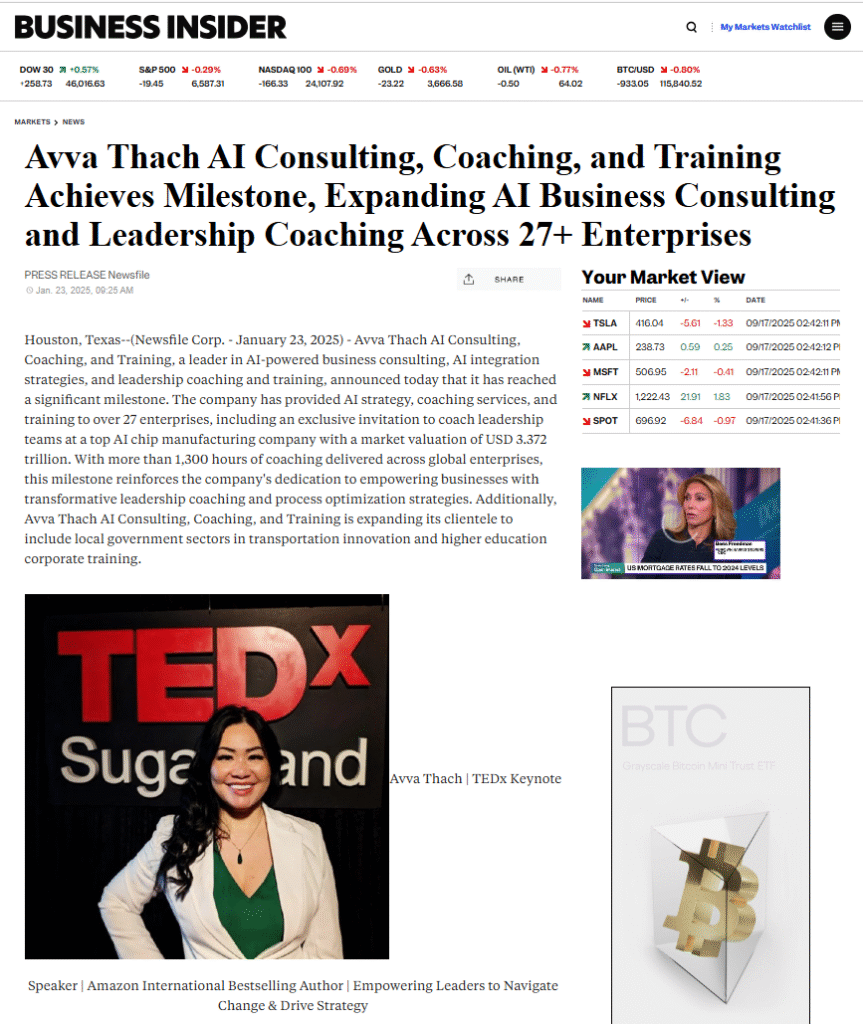Agile Business Transformation: Adapting to Market Changes at Speed
Introduction
Welcome to the whirlwind world of business agility, where the only constant is change. In today’s hyper-competitive marketplace, organizations must adapt faster than a chameleon at a color party. Gone are the days when businesses could afford to sit back and wait for trends to unfold; now, they need to anticipate, pivot, and act with lightning speed.
So, what exactly is business agility? Think of it as an organization’s ability to respond quickly and effectively to market changes while maintaining its core values. It’s not just about being flexible; it’s about being nimble and ready to embrace innovation at every turn. In this blog post, we will explore how agile business practices can help your organization thrive amidst uncertainty.
From the implementation of a robust business agility framework to fostering an agile corporate culture, we’ll cover all the essential elements that contribute to an agile transformation. We’ll also dive into the significance of leadership in driving these changes and how continuous improvement can maintain momentum.
Ready to discover how you can enhance your organization’s resilience and adaptability? Let’s jump right into understanding what makes business agility not just a buzzword but a vital strategy for success!

Understanding Business Agility
In the fast-paced world of business, business agility is not just a buzzword; it’s a necessity. It refers to an organization’s ability to rapidly adapt to market changes while maintaining operational efficiency. Think of it as your business’s ability to do the cha-cha while everyone else is still trying to figure out the Macarena.
Agility in business strategy encompasses a variety of agile business practices that allow companies to respond swiftly and effectively to external pressures, such as shifting customer demands or competitive threats. In fact, a staggering 70% of organizations are either currently undergoing or planning to undergo an agile transformation, according to McKinsey.
- Flexibility in Operations: Streamlining processes to adjust quickly.
- Nimble Business Strategies: Crafting strategies that can pivot based on real-time data.
- Cross-Functional Collaboration: Fostering teamwork across departments for innovative solutions.
- Continuous Improvement: Embracing lean and agile principles for ongoing enhancement.
The importance of agility cannot be overstated. As markets evolve and new technologies emerge, companies with strong organizational agility will not only survive but thrive. This means being able to implement agile management techniques effectively and fostering an agile corporate culture that encourages innovation and resilience in business processes.
A critical aspect of achieving this level of adaptability is understanding the business agility framework. This framework serves as a roadmap for organizations looking to enhance their enterprise agility through structured approaches that align goals with agile processes. By embedding agility into their core operations, businesses can ensure they remain competitive in an ever-changing landscape.
The ability to respond quickly and effectively to change is what separates the leaders from the laggards in today’s business world.
In conclusion, understanding business agility is about recognizing its value as a strategic asset. By embracing this mindset, organizations can enhance their speed-to-market strategies and create adaptive enterprise solutions that keep them ahead of the curve.
The Role of Agile Business Practices
In the fast-paced world of business, where change is the only constant, agile business practices have emerged as a beacon of hope for organizations seeking to enhance their business agility. But what exactly are these practices, and why should every forward-thinking leader pay attention?
At its core, agile business practices are not just about adopting new methodologies; they’re about fostering a culture that embraces flexibility and responsiveness. Think of it like building a sports team that can adapt its strategy mid-game based on the opponent’s moves. This is crucial in today’s dynamic market landscape.
Overview of Agile Business Practices
- Customer-Centric Approaches: Agile practices prioritize customer feedback and satisfaction, ensuring products and services evolve to meet real needs.
- Iterative Development: Instead of launching a product after years of development, agile encourages rolling out smaller features regularly, allowing for continuous improvement.
- Cross-Functional Collaboration: Teams from different departments work together seamlessly, breaking down silos and enhancing innovation.
- Data-Driven Decision Making: Leveraging real-time data helps organizations make informed decisions quickly.
Benefits of Implementing Agile Practices in Organizations
- Enhanced Flexibility: With an agile organization structure, companies can pivot quickly in response to market changes or disruptions.
- Improved Efficiency: Lean and agile principles streamline operations, reducing waste and optimizing resource usage.
- Nimble Business Strategies: Organizations become adept at developing strategies that are quick to implement and adjust as needed.
- Cultivated Innovation: An agile corporate culture encourages experimentation and creativity, leading to innovative solutions that can set a company apart from its competitors.
The shift towards agile business practices isn’t just a trend; it’s a necessity for survival in today’s competitive landscape. Companies that adopt these principles often report higher employee engagement levels and increased customer satisfaction rates!

The journey towards adopting an agile business model can be challenging but is well worth the effort. By embracing agility in your business strategy, you position your organization not just to survive but to thrive amidst uncertainty. So why wait? Start integrating these practices today and watch your organization transform into an adaptive enterprise ready for whatever comes next!
Building an Organizational Agility Framework
Creating a robust business agility framework is like constructing a solid house; it requires a strong foundation, well-defined structure, and the ability to adapt to the elements. In today’s fast-paced market, organizations must be equipped to pivot quickly and effectively. Here’s how to build your agility framework step by step.
Elements of an Effective Agility Framework
- Clear Vision and Objectives: Align your organization’s goals with agile processes. This means defining what success looks like in terms of agility.
- Cross-Functional Collaboration: Foster teamwork across departments to enhance communication and innovation. Think of it as assembling a superhero team where everyone brings their unique powers!
- Iterative Processes: Embrace an iterative approach that allows for continuous improvement in business practices. This is akin to tuning a musical instrument until it hits the right notes.
- Customer-Centric Focus: Prioritize customer feedback in your agile business model to ensure that your solutions meet real needs and drive satisfaction.
- Data-Driven Decision Making: Leverage real-time data analytics for informed decisions. It’s like having a GPS for your business journey always knowing the best route!
- Cultural Readiness: Cultivate an agile corporate culture that encourages flexibility, resilience, and innovation among employees.
Steps to Develop and Implement the Framework
- Assess Current Capabilities: Evaluate where your organization stands regarding agility. Identify strengths and areas for improvement, much like a health check-up for your business.
- Create a Roadmap: Develop a clear plan outlining how you will implement agile practices across the organization. This roadmap should include timelines, milestones, and responsible parties.
- Pilot Agile Projects: Start small with pilot projects that allow you to test agile methodologies without overwhelming the entire organization. Think of it as dipping your toes into the pool before diving in!
- Train Employees: Invest in training programs that empower teams with agile skills and knowledge. Remember, knowledge is power and in this case, it’s also adaptability!
- Evolve Continuously: After implementation, keep refining your framework based on feedback and results. Agility is about being dynamic; embrace change as part of your organizational DNA.
Key Takeaway: Building an effective organizational agility framework is not just about processes it’s about fostering an environment where teams can innovate, collaborate, and respond swiftly to market changes.
Navigating Agile Transformation
Agile transformation is like trying to change the tires on a moving car. You know it’s essential for better performance, but the process can be bumpy, and the stakes are high. So, what does it really mean to embark on this journey toward business agility? Let’s break it down.
What is Agile Transformation?
At its core, agile transformation is about adopting agile methodologies across your organization to enhance business adaptability. It’s not just about sprinting through tasks; it’s about creating a culture that embraces change and fosters innovation. Think of it as shifting from a rigid ship navigating through stormy seas to a nimble sailboat that can swiftly adjust its course.
Challenges Organizations Face During Transformation
While the promise of agility sounds enticing, organizations often encounter several hurdles:
- Cultural Resistance: People love their comfort zones. Transitioning from traditional practices to agile business practices can lead to pushback.
- Siloed Teams: Departments may operate in isolation, making cross-functional collaboration for agility nearly impossible.
- Lack of Skills: Employees might need upskilling in agile methodologies and tools think of them as needing a new toolbox for a different set of repairs.
- Poor Communication: If teams aren’t communicating effectively, how can they adapt? Misalignment in goals can derail even the best agile strategies.
Strategies for Successful Agile Transformation
A successful transition requires more than just enthusiasm; it demands strategic planning and execution. Here are some tried-and-true strategies:
- Create an Agile Mindset: Foster an environment where experimentation is encouraged, and failure is viewed as a learning opportunity. This aligns with lean and agile principles.
- Invest in Training: Equip your workforce with the necessary skills through workshops and training sessions focused on agile leadership and management techniques.
- Implement Incrementally: Instead of flipping the switch overnight, introduce changes gradually. This allows teams to adjust without feeling overwhelmed like easing into cold water rather than diving straight in!
- Utilize Feedback Loops: Regularly solicit feedback from teams to ensure that everyone is aligned with the transformation goals. This creates an iterative process improvement approach that keeps everyone engaged.
- Leverage Technology: Utilize tools that facilitate real-time data-driven decisions for enterprises with agility focus. A responsive supply chain management system can make all the difference!

Navigating through an agile transformation isn’t just about adopting new processes; it’s about embracing a mindset shift that aligns with your organization’s vision. By tackling challenges head-on and employing effective strategies, you’ll be well on your way to achieving true enterprise agility.
Agrile Leadership and Management Practices
When it comes to business agility, leadership isn’t just about having a corner office or a fancy title. It’s about fostering an environment where agility can thrive. Think of leaders as the gardeners of organizational agility; they need to cultivate the right conditions for growth.
The Role of Leadership in Fostering Agility
In an agile organization, leaders are expected to wear many hats: from visionaries to enablers. Here are some key roles they play:
- Vision Setter: They define the direction and inspire teams to embrace change.
- Culture Champion: They promote a culture that values flexibility and innovation.
- Empowerment Advocate: They empower teams by delegating decision-making authority, encouraging autonomy.
- Feedback Facilitator: They establish mechanisms for continuous feedback, ensuring that teams can pivot quickly based on real-time data.
Agile Management Techniques for Teams and Projects
Agile management is all about adapting to change swiftly and efficiently. Here are some techniques that can help:
- Sprint Planning: Break projects into manageable sprints, allowing teams to focus on delivering value incrementally.
- Dailies and Stand-ups: Short daily meetings keep everyone aligned and allow for quick adjustments based on progress or obstacles.
- KPI Tracking: Use key performance indicators to measure success and adapt strategies accordingly think of it as your agility dashboard!
- Cross-Functional Collaboration: Encourage collaboration across departments to enhance innovation and problem-solving capabilities.
Did you know? According to recent studies, organizations with strong agile leadership see a 30% improvement in team performance compared to those with traditional management styles.
The path to becoming an agile organization isn’t always smooth sailing. Leaders must be prepared to navigate challenges such as resistance to change or misalignment in goals. However, by adopting these agile management techniques and fostering a culture of flexibility, organizations can enhance their resilience in business processes while remaining customer-centric in their approaches.
The takeaway? Agile leadership isn’t just about managing tasks it’s about nurturing an environment where innovation flourishes, enabling your organization not just to survive but thrive amid constant change. Ready to embrace the challenge? Let’s get started!
Enhancing Business Adaptability through Agile Principles
In the fast-paced world of business, adaptability is the name of the game. Think of your organization as a rubber band it needs to stretch and flex without breaking! This is where business agility comes into play. By embracing agile principles, companies can enhance their adaptability and thrive amidst constant change.
- The significance of flexibility in business operations: Flexibility is not just a buzzword; it’s a crucial component of a successful agile business model. Organizations that prioritize flexibility can pivot quickly in response to market demands, customer feedback, or unforeseen challenges. This means having the right systems in place think responsive supply chain management and efficient decision-making processes to support rapid adjustments.
- Nimble business strategies for changing markets: Adopting nimble strategies allows businesses to stay ahead of the curve. For instance, by implementing agile management techniques, teams can work cross-functionally to innovate and respond faster to consumer trends. This might involve iterative process improvement where feedback loops help refine products or services in real-time. Moreover, integrating customer-centric agility approaches ensures that offerings align closely with client needs.
Key Takeaway: Embracing agility not only enhances your organization’s adaptability but also strengthens its resilience in the face of disruption. Companies that cultivate an agile corporate culture are better equipped to navigate market fluctuations and drive innovation.
Cultivating a Resilient Corporate Culture with Agility Focused Approaches
In the world of business agility, the phrase “culture eats strategy for breakfast” rings truer than ever. An agile corporate culture is not just a buzzword; it’s the backbone of an organization that thrives in a constantly changing market. Think of it as the secret sauce that helps companies whip up innovative solutions faster than you can say “digital transformation.”
So, how do we cultivate this magical culture? Here are some strategies that can turn your organization into an agile powerhouse:
- Embrace a Growth Mindset: Encourage employees to view challenges as opportunities for learning and innovation. This mindset fosters resilience and adaptability, essential ingredients for agility in business strategy.
- Promote Cross-Functional Collaboration: Break down silos! When teams from different functions collaborate, they share diverse perspectives that fuel creativity and speed to market strategies for businesses.
- Encourage Iterative Feedback Loops: Create an environment where feedback is not only welcomed but sought after. Regular check-ins and retrospectives can help teams pivot quickly based on real-time data-driven decisions.
- Lead by Example: Agile leadership is crucial. Leaders should model agility by being open to change, demonstrating flexibility in business operations, and aligning goals with agile processes.
- Celebrate Failures as Learning Opportunities: In an agile organization structure, failure should be seen as a stepping stone rather than a setback. Recognizing and analyzing what went wrong can drive continuous improvement in business practices.
Did you know? Organizations with a strong agile corporate culture are 3 times more likely to outperform their competitors in terms of customer satisfaction and employee engagement!
Cultivating this kind of resilience isn’t a one-and-done deal. It requires ongoing commitment and adaptation. Think of it like tending to a garden: regular care, attention, and nurturing will yield vibrant growth over time.
Your corporate culture needs to reflect agility in every aspect from decision-making processes to how teams interact with one another. By embedding these principles into your organizational DNA, you’re setting the stage for not just surviving but thriving amidst uncertainty.
The Importance of Continuous Improvement in Business Agility
In the fast-paced world of business, continuous improvement isn’t just a nice-to-have; it’s a must-have. Think of it as the secret sauce that keeps your organization not just surviving but thriving amidst constant change. Embracing a culture of iterative process improvement enables organizations to enhance their business agility, ensuring they can pivot quickly in response to market dynamics.
At its core, continuous improvement is about making small, incremental changes that lead to significant enhancements over time. This approach aligns perfectly with the principles of agile management. By focusing on ongoing enhancements, companies can adapt their strategies and operations more fluidly, leading to better outcomes and increased customer satisfaction.
The Concept of Iterative Process Improvement
Think of iterative process improvement as fine-tuning a musical instrument. Just like musicians regularly adjust their instruments for optimal sound, businesses must constantly refine their processes to achieve peak performance. This involves:
- Identifying areas for enhancement: Regularly assess workflows and pinpoint bottlenecks or inefficiencies.
- Testing changes: Implement small-scale changes and measure their impact before rolling them out on a larger scale.
- Gathering feedback: Use real-time data and team input to inform decisions about further adjustments.
- Cultivating a learning culture: Encourage teams to embrace experimentation without fear of failure.
Real-Time Data-Driven Decisions for Enhanced Agility
The ability to make real-time data-driven decisions is another cornerstone of business agility. Organizations that leverage data analytics can respond swiftly to emerging trends and customer needs. Here’s how this plays out:
- Enhanced responsiveness: With access to up-to-date information, businesses can pivot strategies almost instantaneously.
- Bespoke solutions: Tailor offerings based on current market demands instead of relying on outdated assumptions.
- Simplified decision-making processes: Reduce complexity by using data insights to guide choices rather than gut feelings or outdated practices.
A common misconception is that continuous improvement requires massive overhauls or complex systems this couldn’t be further from the truth! In reality, it’s often the small tweaks that lead to big wins. So why not start today? Begin by identifying one area within your organization where you can implement an iterative change and watch as your business agility flourishes!
Conclusion
In the fast-paced world of business, business agility is not just a buzzword; it’s a lifeline. As organizations face unprecedented market changes and technological advancements, the ability to adapt quickly has never been more critical. Embracing agile business practices can transform your organization from a rigid structure into a nimble powerhouse capable of responding to customer needs and market dynamics.
The journey towards agile transformation is not without its challenges. However, by implementing a robust business agility framework, fostering an agile corporate culture, and investing in agile leadership, companies can enhance their organizational agility. This proactive approach enables businesses to leverage their dynamic capabilities effectively.
Key Takeaway: Organizations that prioritize agility not only improve their speed to market strategies but also enhance customer satisfaction through responsive supply chain management and efficient decision-making processes.
Moreover, continuous improvement in business operations through iterative processes ensures that companies remain competitive. The integration of real-time data-driven decisions can empower teams to innovate and adapt swiftly, aligning goals with agile processes.
As we look ahead, it’s clear that the future belongs to those who embrace flexibility in their business operations. By adopting lean and agile principles, organizations can cultivate resilience in their processes and position themselves for long-term success.
If you’re ready to embark on your journey toward greater agility, consider how your organization can incorporate these strategies today. After all, in the realm of business transformation, speed is not just an advantage it’s essential for survival.
Business agility refers to an organization’s ability to rapidly adapt to market changes while maintaining operational efficiency. It’s about being nimble and ready to embrace innovation.
” } }, { “@type”: “Question”, “@id”:”#question2″, “name”:”What are the key components of business agility?”, “@id”:”#question2″, “acceptedAnswer”:{ “@type”:”Answer”, “@id”:”#answer2″, “te” :”
- Flexibility in Operations
- Nimble Business Strategies
- Cross-Functional Collaboration
- Continuous Improvement
” } }, { “@type”:”Question”, “@id”:”#question3″, “name”:”How can an organization implement agile practices?”, “@id”:”#question3″, “acceptedAnswer”:{ “@type”:”Answer”, “@id”:”#answer3″, “text”:”
- Adopt customer-centric approaches
- Encourage iterative development
- Foster cross-functional collaboration
- Utilize data-driven decision making
” } } ] }, { “@type”:”SpeakableSpecification”, “url”:[“https://iavva.ai/business-agility-transform-adapt”], “_speakable”:{ “_speakableText”:[“Explore how agile business transformation enhances business agility, enabling rapid adaptation to market changes.”] } } ] }

















Leave a Reply